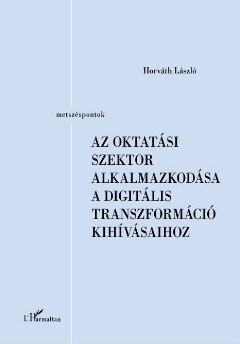Page 178 [178]
176 AZ OKTATASI SZEKTOR ALKALMAZKODASA A DIGITALIS TRANSZFORMACIO ..,
Kimmons, R., Graham, C. R., & West, R. E. (2020). The PICRAT model for technology in¬
tegration in teacher preparation. Contemporary Issues in Technology and Teacher Education,
20(1). https://citejournal.org/volume-20/issue-1-20/general/the-picrat-model-for-tech¬
nology-integration-in-teacher-preparation
Király, G., Dén-Nagy, I., Géring, Zs., 8t Nagy B. (2014). Kevert módszertani megközelítések.
Elméleti és módszertani alapok. Kultúra és Közösség, 5(2), 95—104.
KIRSTAT. (2020). Köznevelési statisztikai adatok. https://dari.oktatas.hu/kirpub/index
Kopp, E., & Pesti, Cs. (2022). Organisational Learning and Resilience in Hungarian Schools
During COVID-19 Distance Education — Study of Two Cases. European Journal of Teacher
Education, 0(0), 1-20. https://doi.org/10.1080/02619768.2022.2154205
Kopp E., & Saäd J. (2021). A pandemia elsö hulläma a felsöoktatäs-kutatäsok tükre¬
ben: Szakirodalmi ättekintes. Nevelestudomäny, 3, 7-22. https://doi.org/10.21549/
NTNY.34.2021.3.1
Korthagen, F. A. J. (2004). In search of the essence of a good teacher: Towards a more holistic
approach in teacher education. Teaching and Teacher Education, 20(1), 77-97. https://
doi.org/10.1016/j.tate.2003.10.002
Kozma, R. B., & McGhee, R. (2003). ICT and Innovative Classroom Practices. In R. B. Kozma
(Szerk.), Technology, Innovation and Educational Change. A Global Perspective. A Report
of the Second Information Technology in Education Study Module 2. (0. 43-80). ISTE.
König, J., Jager-Biela, D. J., & Glutsch, N. (2020). Adapting to online teaching during CO¬
VID-19 school closure: Teacher education and teacher competence effects among early
career teachers in Germany. European Journal of Teacher Education, 43(4), 608-622.
https://doi.org/10.1080/02619768.2020.1809650
Kulviwat, S., Bruner II, G.C., Kumar, A., Nasco, S. A., & Clark, T. (2007). Toward a unified
theory of consumer acceptance technology. Psychology & Marketing, 24(12), 1059-1084.
https://doi.org/10.1002/mar.20196
LearnPlatform. (2022). Research-based rubric for grading edtech. https://www.instructure.
com/resources/infographic/edtech-grading-rubric
Lénard S., Szivak J., Toth-Pjeczka K., Urban K., & Horvath L. (2022). Tanuldszervezeti
jellemzék és a pedagögusok tanuläsa a hazai köznevelesi rendszerben. Nevelestudomäny,
1, 37-52. https://doi.org/10.21549/NTNY.36.2022.1.2
Lin, C.-H,, Shih, H.-Y., & Sher, P. J. (2007). Integrating technology readiness into techno¬
logy acceptance: The TRAM model. Psychology & Marketing, 24(7), 641-657. https://
doi.org/10.1002/mar.20177
Marsick, V.J., & Watkins, K. E. (2003). Demonstrating the Value ofan Organization's Learning
Culture: The Dimensions of the Learning Organization Questionnaire. Advances in Devel¬
oping Human Resources, 5(2), 132-151. https://doi.org/10.1177/1523422303005002002
Mishra, P. (2019). Considering Contextual Knowledge: The TPACK Diagram Gets an
Upgrade. Journal of Digital Learning in Teacher Education, 35(2), 76-78. https://doi.org
/10.1080/21532974.2019.1588611

